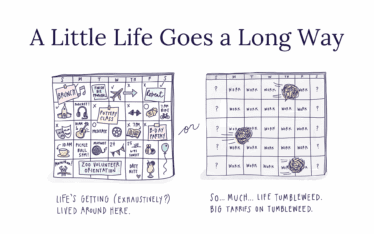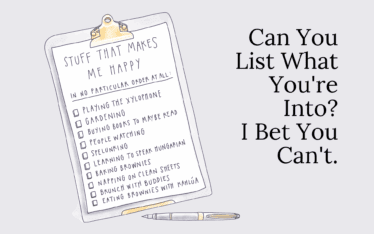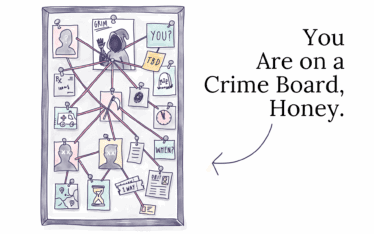Don’t you love happiness hacks? Cheap ‘n cheerful . . . down ‘n dirty . . . easy peasy lemon squeezy . . . any relatively effortless way to feel happier: count us in, right?
Life—in addition to being annoyingly temporary (had to throw that one in there!)—is unpredictable and fickle. We wouldn’t be wrong to diagnose it with Rapid Cycling Bipolar Disorder: sunshine and rainbows one day, debt and diarrhea the next. So when life is having a low tide day, so to speak, we need a quick fix. A lemon-squeezy kind of fix.
We just need to smile.
The research is irrefutable: smiling makes an impressively positive difference to our minds and well-being.
Smiling studies that are actually interesting.
There are countless cool studies out there about how smiles act as a barometer of our positive emotions, and how feedback from facial expressions influence our emotions and behaviors. Check a few out . . .
- Smiling predicts our future. Researchers studied women’s college yearbook photos and were able to predict how likely they were to be married, how satisfied they’d be in their respective marriages, and how likely they were to get divorced. It had nothing to do with their hair. Women with genuine smiles in their photos—called Duchenne smiles, which require movement of muscles around the mouth and corners of the eyes, so, not the fake dead-eye smiles—were more likely to be satisfied with their lives up to 30 years later, be in stable marriages, and live longer. The study authors note that “smiling behavior in photographs is potentially indicative of underlying emotional dispositions that have direct and indirect life consequences.” (I don’t have a college yearbook but based on my “too cool for school” high school yearbook poses, it looks like I’ll be divorced by the end of the month. Gulp.)
- Smiling can buy us seven extra years of life. Psychologists studied 196 Major League Baseball roster photos from 1952 and did fancy things in the lab to gauge “smile intensity.” The nonsmiling players lived to an average age of 72.9, the dead-eye smilers made it to an average of 75 years, and the Duchenne smilers outlived them all with an average age of 79.9—still smiling in the grave, perhaps. The researchers noted that “even if smiles were requested [by the photographer], smile intensity reflected a general underlying disposition… individuals whose underlying emotional disposition is reflected in voluntary or involuntary Duchenne smiles may be basically happier than those with less intense smiles, and hence more predisposed to benefit from the effects of positive emotionality. Attractiveness did not influence longevity.” (Look at any of your photo ID cards; are you smiling like you mean it? Should we plan your funeral, pronto? Or maybe ask for a photo re-take instead?)
- Smiles on social media are predictive, too. Two longitudinal studies looked at smile intensity in Facebook profiles and “found that female and male participants who displayed a more intense smile in their first-semester profile photo were indeed more satisfied with their lives during that first semester at college—and, more importantly, 3.5 years later as they were about to graduate from college.” This study was not sponsored by Meta. (What do your social media profile pictures look like?) (Although there isn’t research on this, if your picture includes a pet I do believe it translates to a very long lifetime of happiness.) (Chewy should sponsor me to do this research.)
- Self-perception theory is a thing. Psychologically we infer our attitudes from our actions; acting “as if” we feel a certain way can translate to actually feeling that way. Research confirms that facial expressions do have an impact on our feelings; while we can’t expect to fake it till we make it to permanent happiness, the facial feedback hypothesis does support the connection between the look on our face and our emotional state.
- Smiling is contagious. Researchers are also clear that mere exposure to a smiling face (even if it’s a weird VR avatar face) can predict a lift in one’s mood, through what’s known as “mood migration”—which means that we need to hang around with happy-looking people a lot more often. (Or happy avatars as a close second?) If the people in your social sphere have Resting Bitch Face, well, the evidence seems clear that they need to be turfed from your life.
- Smiling makes us likeable. The act of smiling when you don’t feel like smiling is called “expressive dissonance,” and studies have shown that it builds likeability and social bonds, so even if you don’t trick yourself into a better mood, you’ll be better received by others (which might put you in a better mood, especially if you yearn to be liked). Log this as a mental note the next time you’re meeting new people at a party or networking event . . . fix your face to have a smile on it and you’ll be the belle of the ball. (Or at least not a social pariah.)
- Smiling makes people perceive women as more attractive. Researchers asked people to evaluate 240 photos of men and women and classify them as attractive or unattractive. The results? “A positive facial expression improves facial attractiveness in women more than in men.” Discuss amongst yourselves.
- Smiling makes exercise less tortuous. Study participants using a stationary bike perceived less desire to kill themselves for signing up for a study using a stationary bike physical exertion when they were deliberately smiling than when they were deliberately frowning. They also reported an increase in positive affect after smiling while on the bike.
So here we are, talking about rigging our happiness through smiling, and while it is a great shortcut to a better mood, I’d be remiss if I didn’t also campaign for ACTUALLY DOING THINGS THAT MAKE YOU HAPPY. (Oh right, that.) But when you’re in a pinch and the going’s tough, the tough get smiling. You can’t go back and smile in college, or on your MLB card, but you can start smiling from now on.
Do it with me right now: smile big and bright. Yes! You do look like an idiot! And that’s okay. Smile even bigger, using your eyes and eyebrows. (No one really knows what it means to smile with your eyes, but it likely involves crinkling.) Do your cheeks hurt yet? (One study required participants to hold a smile for four minutes, so be thankful I’m only asking for a few seconds.) More eyes! More teeth! And you’re done.
Thich Nhat Hanh said it best: “Sometimes your joy is the source of your smile, but sometimes your smile can be the source of your joy.”
Go smile up a storm out there—with 73% more eye-crinkling. Things are looking up.

Here are 114 happy faces, and 1 unhappy face. Can you find the sad guy? And do I have too much time on my hands to doodle 115 faces? I’m smiling so it’s okay.

P.S.: We can connect here on Instagram!
P.P.S.: Oh and just in case you missed it… I’d love you forever if you took 16 minutes out of your life to watch my TEDx talk!






